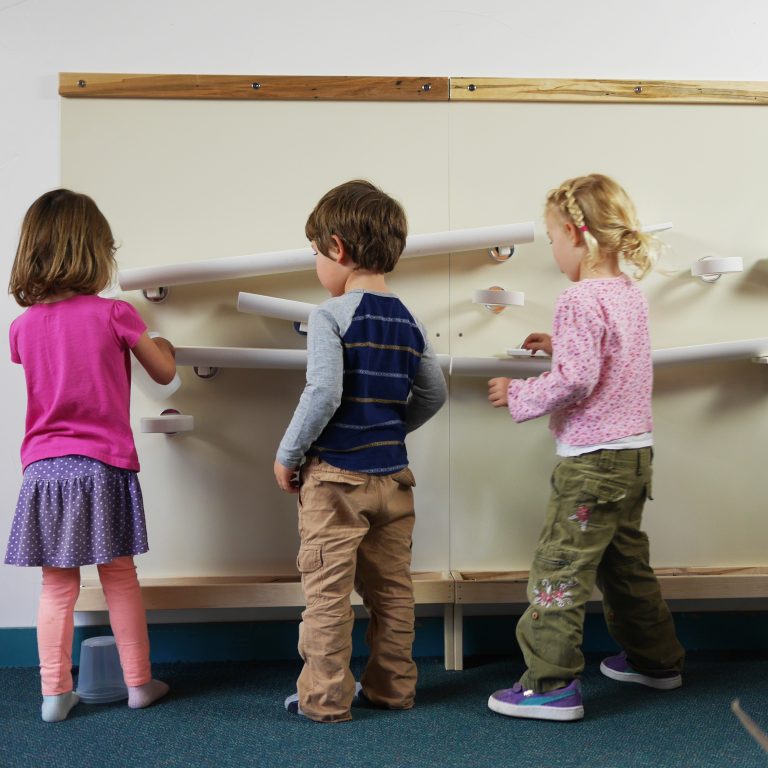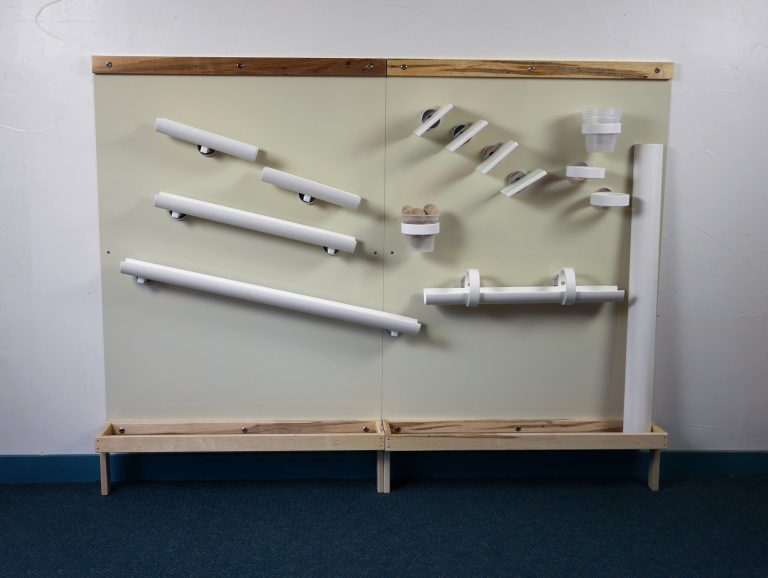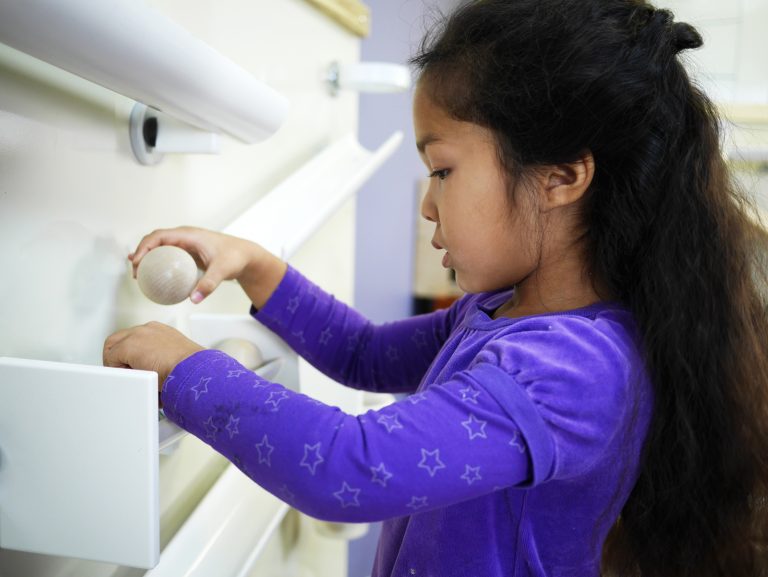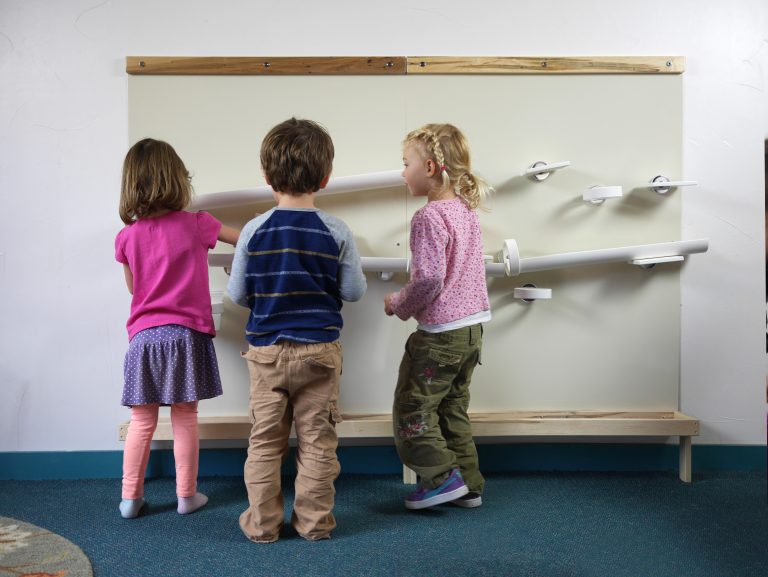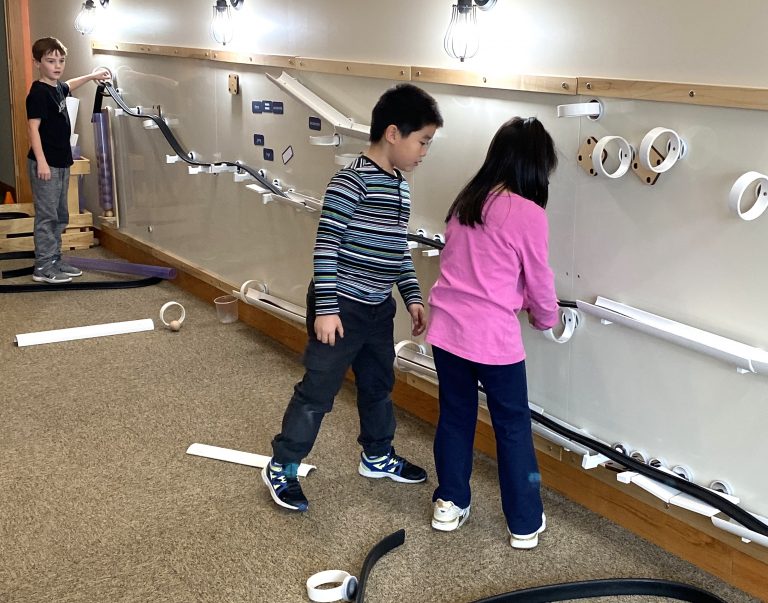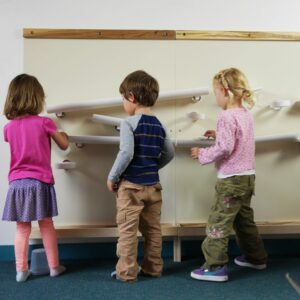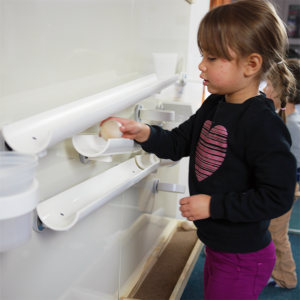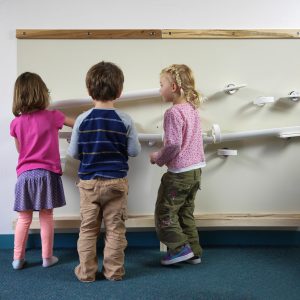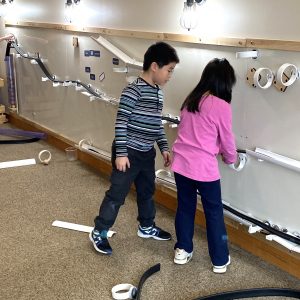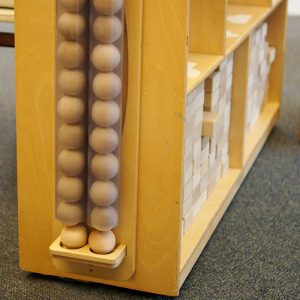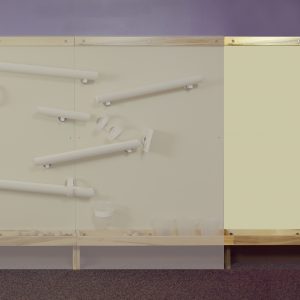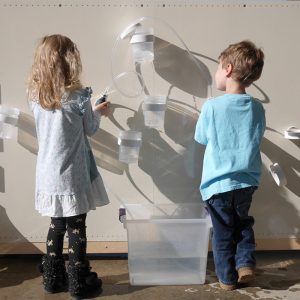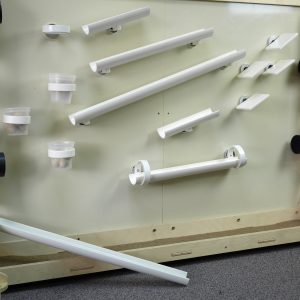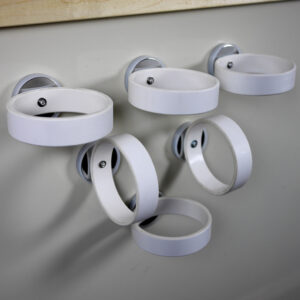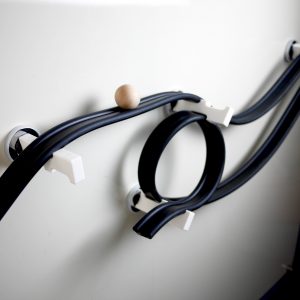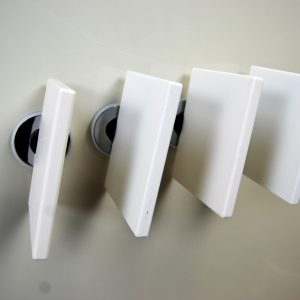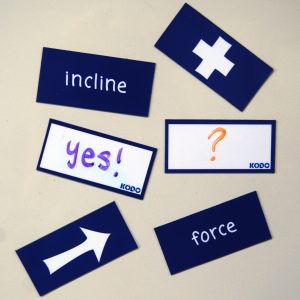The Magnet Wall is a unique platform for expanding creative play in your classroom. Examine slope, cause and effect, momentum, and gravity through hands-on experimentation! Very few products on the market offer a vertical play space that challenges children to deal with gravity in this way. Children arrange the ramps, rings, and other magnetic loose parts to create a vertical drop. Through play and experimentation, children will learn how much slope is needed to move the material down the ramp, through the cups, or over the bridge.
- Beautifully and cleanly mounts to any interior wall, including drywall, brick, cement, and more!
- Creates an intriguing centerpiece for a common area or entryway
- The visually enticing design encourages child-lead investigations for students of all ages
- Wormy Maple trim is both beautiful and durable for a long lifetime of play
The Indoor Magnet Wall Kit includes Two 34″ wide x 46″ tall metal panels where the children can stick, unstick, and move magnetic rings that hold ramps, cups, tubes, and many other interactive pieces.
The Magnet Wall Fundamentals Pack is included!
- 4 magnetic ramps (one 3 ft, one 2 ft, and two 1 ft)
- 2 non-magnetic ramps (one 3 ft and one 2 ft)
- 30 weather-treated balls (10 2″, 10 1.75″, 10 1.5″)
- 4 walls
- 6 rings
- 4 cups
When installed, the indoor magnet wall is 68 inches wide, 52 inches tall, and 8 inches deep. This product requires assembly.
Please note: Removal of the plastic covers from the magnets will not only scratch the Magnet Wall panels but also void your warranty! We cannot be responsible for modifications to our products in the field without direct supervision and testing. The Magnet Wall is proudly made in the USA.
Appropriate for ages 3+
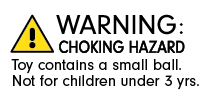
The Magnet Wall was developed to provide a hands-on, mind-on, open-ended means for experiencing Newton’s Laws of Motion. A quick review of those three very important laws would be an excellent first step for adults who will be facilitating play with the Magnet Wall.
Play will come naturally to children. You can be assured of this! All you need to do is place one ramp on the wall, and the children will be intrigued! Whether you have chosen the indoor or outdoor version, the following information from our teachers in the field should answer many of your questions and help you support children as they play. So keep reading!
IMPORTANT: Do not remove plastic caps from magnets! Doing so will cause severe scratching of the magnetic wall panels.
From The Kodo Classroom
Regarding motion, Newton’s Three Laws summarize everything you need to know about teaching young children how things move.
I. Every object in a state of uniform motion tends to remain in that state of motion unless an external force is applied to it.
II. The relationship between an object’s mass m, its acceleration a, and the applied force F is F = ma. Acceleration and force are vectors (as indicated by their symbols being displayed in slant bold font); in this law, the direction of the force vector is the same as the direction of the acceleration vector.
III. For every action, there is an equal and opposite reaction.
In other words…
1. A moving object will keep moving in that direction until something physically pushes on it. So, if the ball rolls down the ramp and collides with something, its motion will change.
2. It takes more force to accelerate massive objects. If you placed a bowling ball on the ramp, its mass would be greater than the force pushing up from the ramp, which would cause the bowling ball to push the ramp down and probably hurt everyone’s feet. So don’t use a bowling ball! If you used a wooden ball on a ramp, the forces pushing on the ball, coupled with the mass of the ball, would make it move forward. If you used a tiny marble on the ramp, its small mass would cause it to accelerate down the ramp quickly because it has much less force than the other forces at work.
3. The third law refers to action and reaction pairs. My force is pushing down on the floor, and the floor’s force is pushing up on me. The same goes for the ball. It is pushing down on the ramp, and the ramp is pushing up on it.
Support for Newton’s Laws of Motion
The challenge for us teaching young children is getting all this information across to the child. Our answer is, don’t; it happens naturally! First, by playing and experimenting, your kids deeply understand how objects interact and move through space. They learn about motion in a way that prepares them for learning these concepts later in primary and secondary grades. They will never truly understand the Laws of Motion until they have these experiences and see and feel the movement themselves.
Pick a few keywords to work with and throw them into the conversation whenever possible. “Did you see that ball whack the other ball?” “Wow, the momentum of that ball transferred a lot of energy to the other ball!” Use complex vocabulary again and again, and soon, your children will use “transfer of energy” and more on their own.
Setting Up the Magnet Wall
Initially, place one ramp on the wall and leave several ramps and balls in bins nearby. Place a few balls in the ball-catching tray at the bottom of the wall. Remove all the other parts and add them in after all the children have had a chance to play and move the ramps about. For some programs, this could be hours, days, or weeks. A huge part of children’s understanding comes with setting it up themselves. Without adults explaining anything, the children will make their own discoveries as they examine the ramps and watch one another play. It is helpful for adults to verbalize and make a record of the children’s findings, such as…the ramps have magnets, the wall is magnetic (ferrous), and the ramps can be positioned in many ways.
Challenges for Children – Pose the following:
Make a pathway that includes a ball drop along the way.
Make a pathway that causes the ball to travel uphill at some point along the path.
Make a pathway that zig-zags down the wall, using as much vertical and horizontal space as possible.
Teachers can also add more variables by adding some loose parts. Cardboard mailing tubes, clear pipes, cars, and wooden eggs invite interest. Over time, introduce other types of balls: rubber balls, tennis balls, whiffle balls, golf balls, wool balls, bumpy balls, hacky sacks, and a few that light up.
Key Words
motion, travel, collision, momentum, force, energy, push, pull, forward, backward, speed, trajectory, energy, kinetic energy, accelerate, decelerate, quick, slow, crash, bump, velocity, increase, decrease, stop, rest, continue, pathway, course, system
Q’s for children and adults
Do certain ramp positions work better than others?
How will you know if you are successful or if your idea works?
Does speed, slope, or both affect a ball’s energy?
Do balls have energy when they are at rest?
How many ways are there to launch the ball?
Who was Sir Isaac Newton? What are the Three Laws of Motion?
What do the words force and momentum do with this magnetic wall and ramp system? Where can we find out about these important words in the school or library?


